Kigwema village in Nagalands Kohima district still carries the legacy of the Second World War (1939-45) as Japanese soldiers were stationed in the mountainous village during the war and fought the Battle of Kohima.
The British and Indian troops fought against the Japanese invaders in the 80-day-long Battle of Kohima which started on April 4, 1944.
The Japanese were defeated, forcing them to retreat.
President Droupadi Murmu visited the popular Kigwema village on November 3 last year.
After visiting the village, Murmu had said she would take back with her good memories of the famous Naga village, where Mount Japfu, the second highest peak in Nagaland, is situated.
Nagaland Chief Minister Neiphiu Rio said that it is one of the largest villages of Nagaland with a population of 7,562.
The Chief Minister said that the village has a virgin forest with steep hills but it has a gentle slope with fertile land suitable for cultivating paddy, vegetables and fruits.
Kigwema Village Council Chairman Balie Kire said that the village was partnering with the Central government and state government in various initiatives, policies, development work and other schemes.
Balie Kire added that the village is co-existing with the Army and para-military forces stationed at Zakhama Military Station.
According to Dr Samudra Gupta Kashyap, a Guwahati-based author and journalist, Ruzazho is another small village which a section of the local people say was liberated from the British by the Azad Hind Fauj or the Indian National Army (INA) in April 1944.
The Azad Hind government reportedly 'administered' the village for a few months thereafter, with local historians claiming that Netaji Subhas Chandra Bose had visited the Naga Hills, had spent a few days at Ruzazho, and had also appointed a local youth Vesuyi Swuro as a dobashi (interpreter), Kashyap told IANS.
The Battle of Kohima was one of the fiercest battles of WW-II, in which British and Indian troops fought against the Japanese.
The Japanese were defeated, marking the beginning of the Allied forces' push into what was then Burma and is now Myanmar.
One of the most decisive battles fought on the eastern front in the Second World War, the Battle of Kohima, has been largely forgotten by most Indians.
In 1944, during the height of the war, under "Operation U Go", the Japanese commander in the region Lieutenant Gen Renya Mutuguchi, planned an incursion into India via Burma.
Assistant Professor Pfutsero of the Government College in Nagaland in his paper titled 'INA and Northeast India', said that Lieutenant Gen Mutuguchi along with Subhas Chandra Bose hoped to bring about a complete collapse of the British Raj in India.
The plan was to attack the northeast of India through Burma.
The Japanese forces intended to attack the British garrison in Kohima after which they would take Assam and then march on to Delhi, but the British and Indian forces fought heroically and thwarted the ambitious plans of Japan.
In March 1944, the Japanese came in through the dense jungles of the northeast region from Burma into India.
They attacked Imphal first, catching the British by surprise. After this, they eyed Kohima and the garrison stationed there which was a relatively obscure barracks because this part of the region was not key to British plans.
With around 2500 personnel, the British and Indian contingent battled with the 12,000 to 15,000 Japanese soldiers comprising three divisions - 15th, 31st and 33rd.
The British troops held on to the Japanese strategic positions and troubled them with their experienced artillery fire.
The Japanese were also worried by the lack of adequate supplies. They had brought along with them about 5,000 oxen to be slaughtered for food, but most of the animals died on the way.
The bungalow and the tennis court of the Deputy Commissioner of Kohima were witness to bloody battles.
Many engaged in hand-to-hand combat. The number of people who perished was in the thousands and many others got sick because of the stench of rotting corpses.
Supplies were low on both sides but the soldiers battled on steadfastly.
British reinforcements arrived in Dimapur to relieve the forces at Kohima. The Japanese realised that their position was precarious as they were extremely low on supplies forcing them to start to fall back.
The Indian and British troops lost about 4,000 men while the Japanese lost 5000 to 7000 men in the Battle of Kohima which is often referred to as the "Stalingrad of the East".
The British National Army Museum voted this battle as "Britain's Greatest Battle".
Today, in the place where the tennis court of the Deputy Commissioner was, there is a war cemetery for the Allied dead.
It has the famous Kohima Epitaph which reads "When you go home, tell them of us and say for your tomorrow, we gave our today."
The Battle of Kohima turned the tide of the war in the eastern theatre, forcing the Japanese to retreat.

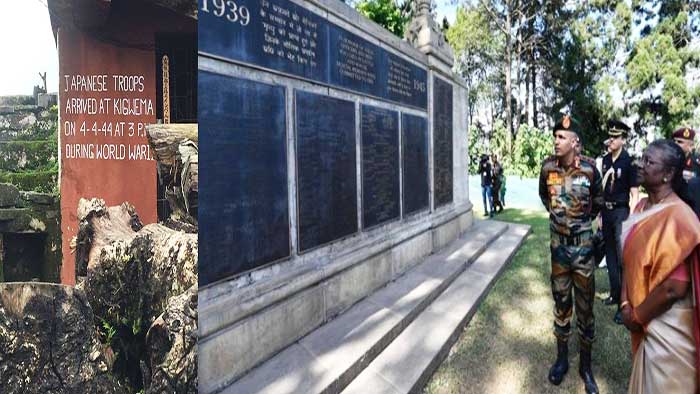
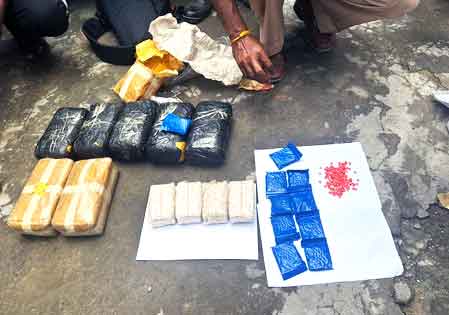
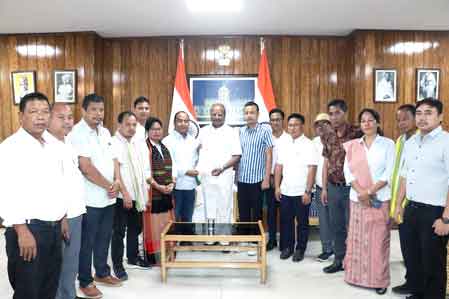
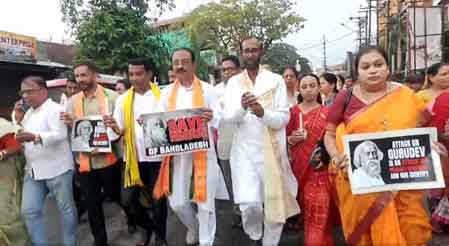
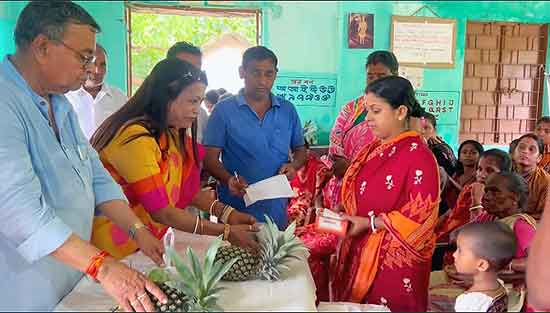
Drugs worth Rs 4 crore seized in Tripura, one held
Tripura Police on Sunday seized drugs worth Rs 4 crore and arrested a drug peddler, who ferried the narcotics to the state from Mizoram via southern Assam, an official said.
BJP ally Tipra Motha Party seeks PM Modi's intervention to deport Tripura's illegal immigrants
The Tipra Motha Party (TMP), a tribal based party and an ally of the ruling BJP, demanded Prime Minister Narendra Modi's intervention to identify and push back all illegal Bangladeshi immigrants living in Tripura to the neighbouring country.
Tripura BJP holds candlelight rally against vandalism at Tagore's ancestral home in B'desh
The ruling BJP in Tripura on Sunday held a candlelight rally to protest the recent attack and vandalism of the ancestral home of Nobel laureate Rabindranath Tagore in Bangladesh.
Minister Ratan Lal Nath shares fruits from his orchard with villagers
In a heartwarming gesture that has become a cherished annual tradition, Agriculture and Farmers’ Welfare Minister Ratan Lal Nath on Sunday once again distributed fruits from his personal orchard among the people of his native village, Koroitala in Mohanpur under West District.
IMD issues orange alerts for very heavy rainfall over Tripura
The Meteorological Centre, Agartala has forecasted heavy to very heavy rainfall accompanied by thunderstorms, lightning, and gusty winds over Tripura from 16th to 18th June 2025.
Tripura Police seize Yaba tablets worth Rs 4 Crore, one arrested
In a major operation against drug trafficking, Tripura Police on Sunday seized 80,000 Yaba tablets valued at around Rs 4 crore from a truck at the Churaibari check post in North Tripura district, near the Assam border.
PCC to launch outreach campaign from June 22, highlighting BJP’s failures
In line with the directives of the All India Congress Committee (AICC), the Tripura Pradesh Congress Committee (TPCC) on Sunday announced a state-wide public outreach campaign starting from June 22.
Two drowned in Pune bridge collapse, PM Modi speaks to CM Fadnavis
At least two people were killed, 32 others injured, while a total of 41 people were rescued after they fell into an overflowing river when an old bridge they were crossing collapsed in Maharashtra's Pune district on Sunday.